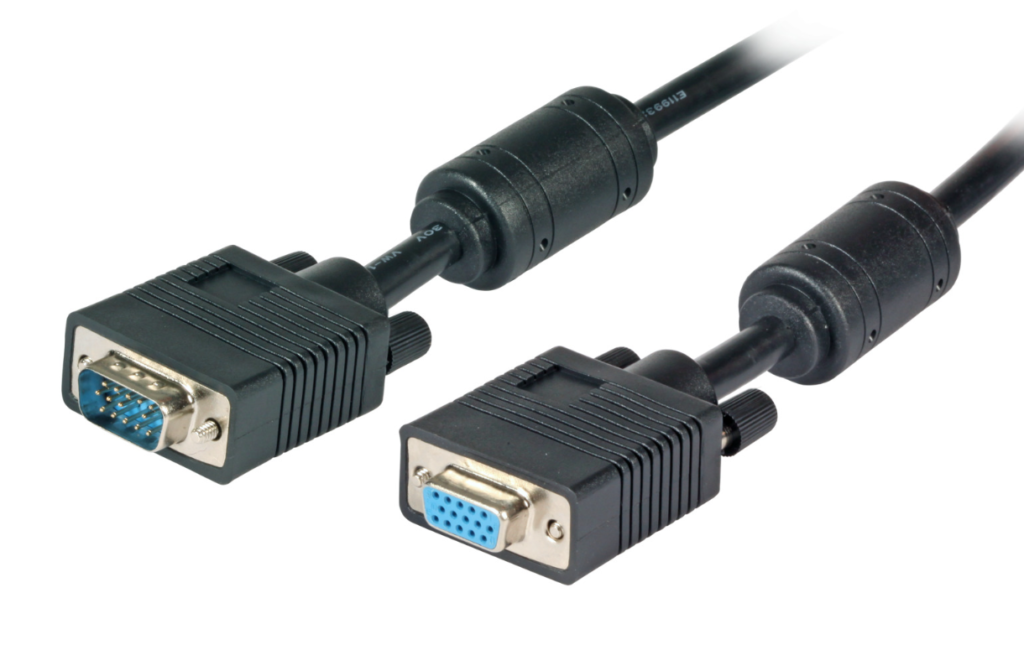If you are not new to the projector and computer world, chances are you might already know that there are various display standards.
These display standards are made to tell us how clear and sharp an image would be.
SVGA vs VGA. The two most commonly used and preferred display standards are SVGA and VGA.
SVGA vs VGA
SVGA vs. VGA. Since these two display standards can not be the same, one is supposed to be better and the other okay for a job. Which one is better and which one is okay can only be found upon comparing the two options.
SVGA
SVGA stands for Super Video Graphics Array. This display standard was developed by NEC home electronics.
It is the same display standard that has also been referred to as Ultra Video Graphics Array.
SVGA features 800 x 600 pixels, a 4:3 aspect ratio, and 480,000 pixels. It is believed and has been observed as well that SVGA offers a decent picture.
VGA
VGA is known as Video Graphics Array. The said display standard was developed by IBM several decades back.
VGA delivers 640 x 480 pixels at a time. Therefore, it is quite suitable for several purposes as well.
SVGA vs VGA. Now that you have been made aware of what SVGA and VGA are, we all are on the same page to compare the two options.

SVGA vs. VGA; Which One is Better?
Resolution
As you know the SVGA and VGA are two different display standards. They offer different resolutions.
Therefore, the basic difference between the two would be “resolution”. The SVGA delivers 800 x 600 pixels whereas the VGA rewards 640 x 480 pixels at a time.
Therefore, it can be judged that the SVGA focuses more on details as compared to the other display standard; VGA.
Development
SVGA and VGA are the two oldest display standards, the most recent one is WXGA. The two display standards have been introduced by two different companies.
SVGA is brought to us by NEC Home Electronics whereas the VGA is an invention of IBM.
VGA was introduced back in 1987 however the extension of VGA known as SVGA came one year after VGA; in 1988.
Related SVGA vs. XGA vs. WXGA
Memory SVGA vs. VGA
Since the SVGA and VGA are two different display standards, they can not be the same in any sense.
The VGA has a memory of up to 256k whereas the extension of VGA known as SVGA has been introduced with an impressive memory of 1024k.
What’s more convincing about SVGA is that it includes supplementary memory whereas, VGA does not include supplementary memory at all.
In other words, the SVGA has and utilizes more memory whereas, the VGA has and utilizes less memory as compared to the other option.
Screen color
SVGA vs. VGA. The VGA and SVGA can also be compared on the grounds of screen colors. VGA takes 256 colors from 262, 144 color collections. It works by using a 6-bit digital-to-analog converter.
The 6-bit digital-to-analog converter converts analog blue, red, and green, signals which carry distinctive information for each blue, green, and red color.
The SVGA is a little more advanced, it takes 256 or 16 million screen colors depending on the image and video content.
Price SVGA vs. VGA
It’s quite obvious, the better the image quality the higher the price. VGA offers better but inferior results as compared to the improved more advanced version of SVGA. Therefore, SVGA is far more expensive than VGA.
SVGA vs. VGA. SVGA or Super Video Graphics Array is undoubtedly the best option as compared to VGA or Video Graphics Array.
The SVGA features 800 x 600 pixels whereas the VGA rewards with 640 x 480 pixels. Therefore, there is no way VGA can compete with SVGA.

Can I use SVGA cable for VGA?
Yes, you can use an SVGA cable for VGA. SVGA (Super Video Graphics Array) cables are backward compatible with VGA (Video Graphics Array) ports, which means that you can use an SVGA cable to connect a device with a VGA port to a display that has an SVGA input.
However, it’s important to note that while an SVGA cable can support higher resolutions and refresh rates than a standard VGA cable, it won’t improve the picture quality of a device that is only capable of outputting VGA-level resolution and refresh rates.
Conclusion SVGA vs VGA
In brief, VGA and SVGA are the two most widely used display standards. VGA and SVGA were developed by NEC Home Electronics and IBM in 1987 and 1988. VGA stands for Video Graphics Array and SVGA stands for Super Video Graphics Array.
The main difference between the two display standards is that VGA features 640 x 480 pixels whereas SVGA delivers 800 x 600 pixels.
The SVGA is more popular, clear, sharper, and costly as compared to the older version of VGA. If we compare the two options, SVGA is far better than VGA.